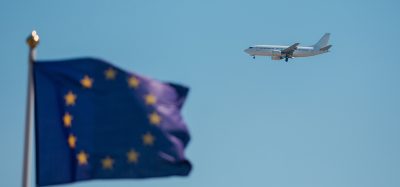Indoor navigation beacon tech enabling augmented reality wayfinding at Gatwick
- Like
- Digg
- Del
- Tumblr
- VKontakte
- Buffer
- Love This
- Odnoklassniki
- Meneame
- Blogger
- Amazon
- Yahoo Mail
- Gmail
- AOL
- Newsvine
- HackerNews
- Evernote
- MySpace
- Mail.ru
- Viadeo
- Line
- Comments
- Yummly
- SMS
- Viber
- Telegram
- Subscribe
- Skype
- Facebook Messenger
- Kakao
- LiveJournal
- Yammer
- Edgar
- Fintel
- Mix
- Instapaper
- Copy Link
Posted: 25 May 2017 | International Airport Review | No comments yet
Around 2000 beacons have been installed across Gatwick Airport’s two terminals providing an indoor navigation system that enables augmented reality wayfinding for passengers.


- New technology forms part of Gatwick’s £2.5 billion transformation programme.
- System to make it easier for passengers to find their way around the airport and avoid missing flights.
- Battery powered beacons reduced costs and complexity and were deployed in just three weeks.
The lack of satellite signals makes road-based navigation systems – such as Google or Apple maps – unreliable indoors, so Gatwick has deployed a beacon based positioning system to enable reliable ‘blue dot’ on indoor maps, which in time can be used within a range of mobile airport, airline or third party apps.
The beacon system also enables an augmented reality wayfinding tool – so passengers can be shown directions in the camera view of their mobile device – making it easier for passengers to locate check in areas, departure gates, baggage belts etc.
The new navigation technology is currently being integrated into some of the Gatwick apps and the airport is also in discussion with airlines to enable the indoor positioning and wayfinding tools to also feature on their app services.
No personal data will be collected by Gatwick although generic information on ‘people densities’ in different beacon zones may help to improve airport operations including queue measurement, streamlining passenger flows and reducing congestion.
Airlines could go further – and with the consent of their passengers – may send reminders on their airline app to late running passengers, for example, or find out where they are and make an informed decision on whether to wait or offload their luggage so the aircraft can take off on time.
Retailers and other third parties may also use the beacon system to detect proximity and send relevant offers or promotional messages, if the passenger has chosen to receive them.
Battery powered beacons kept logistical complexity and costs low, with deployment taking just three weeks, followed by two months of testing and calibration.
The new technology is part of Gatwick’s £2.5 billion investment programme to transform the airport.
Abhi Chacko, Head of IT Commercial & Innovation, Gatwick Airport, said:
“By providing the infrastructure we’re opening the door for a wide range of tech savvy airport providers, including our airlines and retailers, to launch new real-time services that can help passengers find their way around the airport, avoid missing flights or receive timely offers that might save them money.
“We are proud to be the first airport to deploy augmented reality technology and we hope that our adoption of this facility influences other airports and transport providers so that it eventually becomes the norm.”
The end to end “indoor blue dot” service is managed by PointrLabs.
Axel Katalan, CMO at PointrLabs said:
“As an ACI member advising on beacon installations around the world and as a company who have been involved in various airport projects from Asia to US, we are pleased to announce that Gatwick Airport will be the first airport with an end-to-end working system with incredible accuracy both in terms of blue-dot location and orientation.
“Our SDK enables battery-optimised, multiplatform and high performance positioning and other features such as 3D wayfinding through AR and on-screen translation, all of which are now available to be used by Gatwick and their partners as simple as drag & drop.”
Related topics
Augmented reality (AR)/ Virtual reality (VR), Information technology (IT), New technologies, Passenger experience and seamless travel, Terminal operations


















